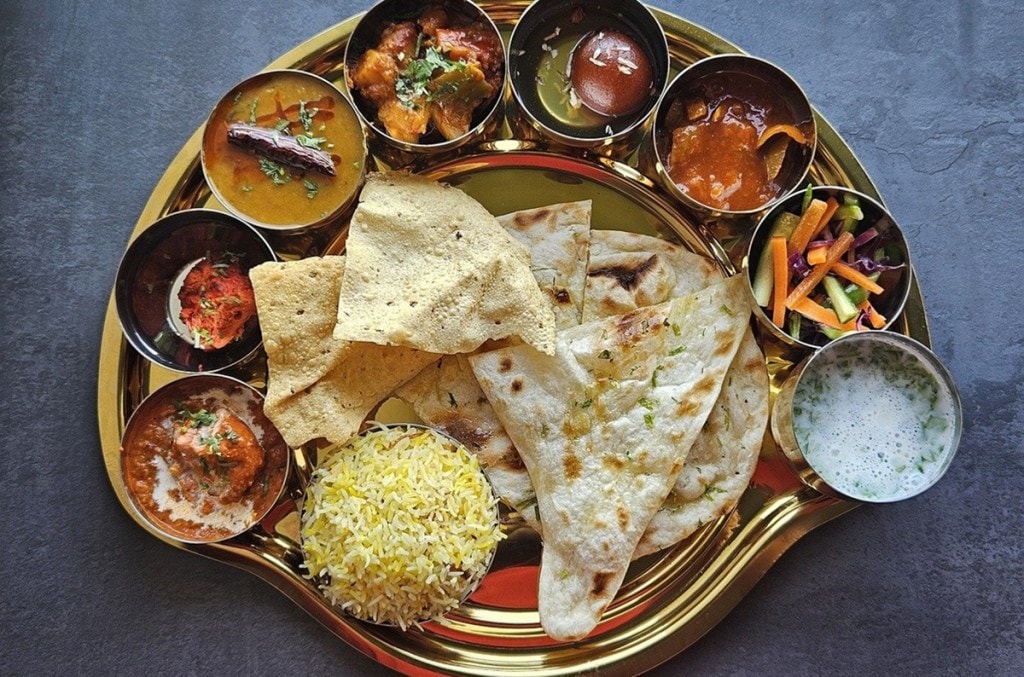Unlike the common perception, the average cost of home-cooked chicken thali continued to stay lesser than the vegetarian thali in the month of September, even as a non-veg thali usually costs twice as much as the veg. If you prefer chicken over daal and veggies, you continued to pay less in the previous month due to decline in the prices of broiler prices, and increase in the prices of onion, potato and tomato, said Crisil’s monthly indicator of food plate cost – The Roti Rice Rate.
The average cost of preparing a thali at home is calculated based on input prices prevailing in north, south, east and west India. The monthly change reflects the impact on the common man’s expenditure. The data also reveals the ingredients (cereals, pulses, broilers, vegetables, spices, edible oil and cooking gas) driving the change in the cost of the thali.
While a veg thali comprises roti, vegetables (onion, tomato and potato), rice, dal, curd and salad, a non-veg thali has the same elements except for dal, which is replaced by chicken (broiler).
According to the CRISIL MI&A Research estimates, the cost of home-cooked non-veg thali declined by 2 per cent, while that of veg thali rose by 11 per cent during September. The cost of non-veg thali fell due to an estimated decline of 13 per cent on-year in the broiler prices. Broiler poultry accounts for 50 per cent of the non-vegetarian thali cost.
Meanwhile, the price of home-cooked veg thali went up by 11 per cent due to an increase in the prices of vegetables, which collectively account for approximately 37 per cent of the thali cost. Tomato prices went up by 18 per cent due to heavy rainfall which impacted tomato output in Andhra Pradesh and Maharashtra. Tomatoes account for approximately 14 per cent of the veg thali cost. Prices of onion and potato surged by 53 per cent and 50 per cent on-year in September because of lower arrivals. Also, price of pulses, which account for 9 per cent of the veg thali cost, rose by 14 per cent amid drop in production last year, leading to lower opening stock this year, further contributing to the uptick. Further, a drop of 11 per cent in fuels cost, from Rs 903 a 14.2 kg LPG cylinder in Delhi in September last year to Rs 803 in March this year, prevented further increase in the thali cost.
Pushan Sharma, Director- Research, CRISIL Market Intelligence and Analytics, said, “Costs of home-cooked thalis showed divergent trends in September – the veg thali cost increased 11 per cent on-year, while that of the non-veg thali declined 2 per cent.”
“We expect a moderate correction in onion prices once the kharif supply comes into the market. Potato prices are also expected to decline, though tomato prices may remain elevated amid lean supply,” he added.
Now, on a month-on-month basis, the cost of both veg and non-veg thalis remained stable. Per the report, any further increase in the thali cost was prevented as potato and tomato prices declined during the month even as onion prices continued to go up. While onion prices rose by 14 per cent on-month due to tight rabi stock in the market as well as reduction of export duty, fueling trade, potato prices declined by 2 per cent due to stocks released from the cold storage, and tomato prices dropped by 9 per cent due to higher arrivals from the southern and western markets. Meanwhile, the cost of non-veg thali stayed unchanged on stable broiler prices on-month amid steady demand.
During the previous month, that is August, the cost of non-veg thali decreased by 12 per cent, while that of veg thali dropped by 8 per cent on-year.

